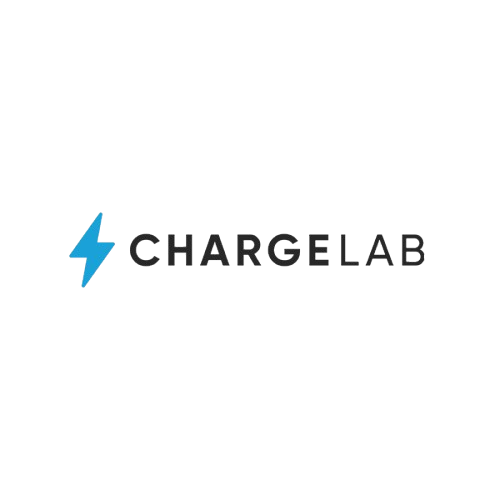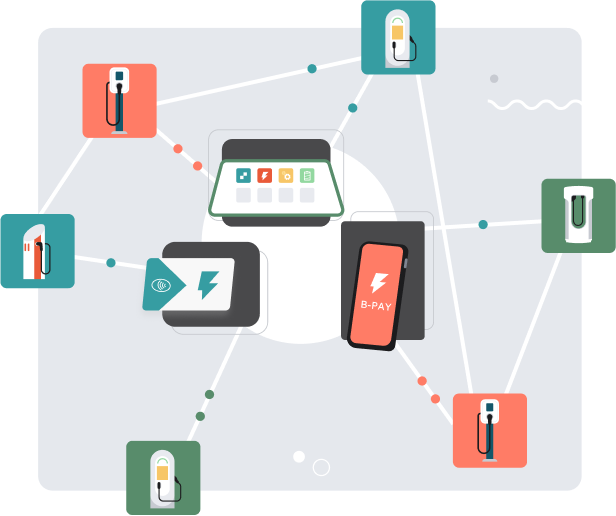EV roaming is a pillar of transport electrification
Using a single account to charge an EV anywhere is a key factor in accelerating the electrification of transport.










The charging infrastructure in North America is growing exponentially ... but is also fragmented
Canada
Networks
Charging stations (Level 2 & 3)
United States
Networks
Charging stations (Level 2 & 3)

What is EV Roaming?
EV roaming means that EV drivers can access a wide range of public charging stations using their preferred method of payment and activation.
With the multiplication of charging networks, there is also a multiplication of accounts and digital wallets. This can be frustrating for EV drivers and is certainly not desirable in a context where there are still barriers to the adoption of electric vehicles.
EV roaming exists precisely to simplify the charging experience by making it flexible and seamless for EV drivers, and to accelerate the electrification of transport for both the public and commercial fleet managers.
The State of EV Roaming
in Canada*
Have no connections
Have 1 to 5 connections
Have 5+ connections
*The statistics provided refer to existing connections with other charging networks or charging applications.
These statistics include only networks with over 100 stations.
A network can be considered as a brand whose management and maintenance are offered by another entity.
Agora's vision is to offer the best charging and payment experience for EV drivers and commercial fleet managers.
We Believe EV Roaming Should be
Simple
Use your preferred mobility service provider to charge your EV through a wide range of networks.
Flexible
Choose your favourite payment method based on what your mobility service provider offers.
Seamless
Worry-free charging on the road in Canada and the U.S for a seamless EV journey.
Stay Plugged into
EV Roaming
Subscribe to receive the latest news about the industry.
Frequently Asked Questions
about EV Roaming
-
Why is EV roaming important for EV adoption?
With the exponential growth in the number of charging stations and networks in North America, we are witnessing a multiplication of payment systems, which are unfortunately not always compatible with each other. This represents a major challenge to the mass adoption of EVs. But there are solutions such as EV roaming which enables EV drivers to charge on multiple networks using their preferred payment method via a single account. This innovation greatly simplifies charging on public networks for commercial vehicle fleets and helps accelerate their electrification.
-
Why not simply use contactless payment with
a credit or debit card to charge a vehicle?Some charging stations offer the option of activating and paying with a credit or debit card (contactless payment). While this method of activation and payment is appropriate in some cases, there are important limitations worth explaining.
Contactless payment by credit and debit card is accepted very inconsistently. With some apps, it can sometimes be difficult to know in advance whether this payment method will be offered before reaching your destination.
Contactless payment by credit and debit card also presents a fundamental limitation to the charging experience that EVs already offer or are set to offer in the near future: the Plug & Charge technology.
With the Plug & Charge technology, it is now possible to charge a vehicle simply by plugging it into a charging station. User authentication, charging account membership and payment are done automatically, something gasoline-powered vehicles will never be able to offer. Using contactless payment with a credit or debit card to activate and pay directly at a charging station cannot offer the Plug & Charge experience.
Finally, payment by credit or debit card does not always allow you to benefit from one of the undeniable benefits of EVs: the ability to track your vehicle's charge in real time, as well as other functions such as trip planning, including charging sessions.
-
With the Plug & Charge technology, EV drivers can simply charge their vehicle at a charging station. Why do we need EV roaming?
EV roaming is fundamental to the Plug & Charge experience. The "magic" of charging up by plugging in your vehicle and automatically activating and paying for the charging station requires a complex software infrastructure, as well as commercial and legal agreements that enable charging between different networks. Without the interoperability of charging networks, the Plug & Charge experience would be severely limited, given the number of automakers and the growth in the number of charging networks
-
What's the difference between EV charging network interoperability and EV roaming?
They are synonyms and mean the same thing.




